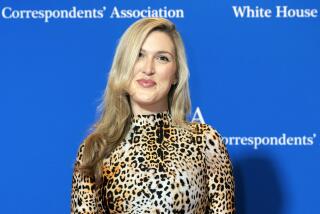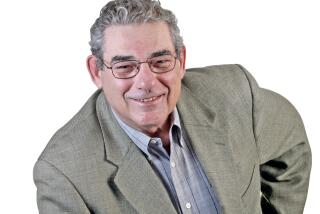Earl Mazo, 87; Nixon biographer also covered politics for New York papers
- Share via
Earl Mazo, a biographer of Richard Nixon and former political correspondent for the New York Herald Tribune and the New York Times, died Saturday at a hospital in Bethesda, Md., of complications from a fall at his Chevy Chase, Md., home. He was 87.
Mazo wrote “Richard Nixon: A Political and Personal Portrait” (1959, reissued and updated with Stephen Hess in 1968), which the Times deemed “far and away the best Nixon study to date -- the most detailed and most penetrating.”
Mazo knew Nixon in the 1950s when he covered the White House as chief political correspondent for the Herald Tribune. He accompanied Nixon, then vice president, on his 1958 trip to Venezuela and wrote a vivid account of how the Secret Service saved Nixon from a mob intent on dragging him from his car.
Born in Warsaw, Mazo immigrated to the United States as a toddler. He grew up in Charleston, S.C., graduated from Clemson University and served in the Army Air Corps. During World War II, he was a reporter for Stars and Stripes newspaper in Europe. After the war, he worked at newspapers in New Jersey and served one year in the Truman administration as deputy assistant secretary of defense.
In 1951, he joined the Herald Tribune, working in New York until 1956, when he moved to Washington.
When John F. Kennedy won the 1960 presidential race against Nixon, Mazo felt strongly that the Democrats had stolen the election, telling the Washington Post in 2000: “There’s no question in my mind that it was stolen. It was stolen like mad. It was stolen in Chicago and in Texas.”
Tipped off by reporters in Chicago, Mazo went to the Windy City, obtained lists of voters in precincts that seemed suspicious and started checking their addresses.
“There was a cemetery where the names on the tombstones were registered and voted,” he recalled. “I remember a house. It was completely gutted. There was nobody there. But there were 56 votes for Kennedy in that house.”
At the urging of Chicago Democrats, Mazo went to Republican areas downstate and looked for fraud there. He found it, but on a smaller scale than in Chicago. He then headed to Texas, where he documented similar Democratic electoral shenanigans. Mazo began writing what he and his editors envisioned as a 12-part series on election fraud. By mid-December 1960, he had published four of the parts, which were reprinted in papers across the country.
Nixon called and asked Mazo to stop writing his series because the country couldn’t afford a constitutional crisis at the height of the Cold War.
“I thought he was kidding, but he was serious,” Mazo told the Post.
Failing to persuade Mazo, Nixon called the reporter’s bosses at the Herald Tribune and implored them to stop running the series. The editors pulled him off the story.
Mazo joined the New York Times in 1964 as national political editor, but after a year switched to Reader’s Digest, where he was a roving correspondent.
His wife of 62 years, Rita Vane Mazo, died in 2003. He married Regina Schatz in 2005.
Survivors include Schatz, of Chevy Chase; two children; two stepchildren and 12 grandchildren.
More to Read
Sign up for Essential California
The most important California stories and recommendations in your inbox every morning.
You may occasionally receive promotional content from the Los Angeles Times.










